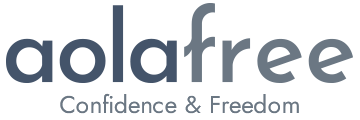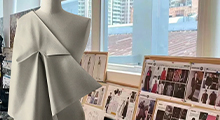Finding a Horse Riding Pants Manufacturer in China: A Guide for AOLAFREE
As Aolafree, we understand the critical role that high-quality, functional, and stylish horse riding pants play in an equestrian's performance and comfort. We are embarking on a journey to find the ideal horse riding pants manufacturer in China, a region known for its robust textile industry and manufacturing prowess. The history of trousers is deeply intertwined with horse riding, with some of the world's oldest known pants, discovered in China and dating back 3,000 years, believed to have been designed specifically for this purpose. This long history underscores the region's foundational connection to equestrian apparel.
This guide is designed to navigate the complexities of sourcing and partnering with a horse riding pants manufacturer in China, ensuring we make informed decisions that align with our brand values of quality, sustainability, and ethical production. We aim to highlight key considerations from material sourcing to quality control and communication, creating a roadmap for a successful partnership that benefits our brand and the wider equestrian community.
Understanding the Landscape of Horse Riding Pants Manufacturer Options in China
China's position as a global leader in textile and apparel production makes it a primary destination for sourcing equestrian wear. The country's vast manufacturing ecosystem offers a unique blend of cost-effectiveness, advanced technology, and logistical efficiency, which are critical advantages for any apparel brand. This landscape, however, is not monolithic; different regions and cities offer specialized capabilities, and understanding these nuances is the first step toward finding the perfect manufacturing partner.
Why China is a Key Location for a Horse Riding Pants Manufacturer
China's dominance in apparel manufacturing is not accidental. It is the result of decades of strategic development, creating an environment where textile production thrives. The nation is the world's largest producer and exporter of textiles and apparel, a status built on a foundation of industrial clusters, technological innovation, and a highly skilled workforce. For a specialized niche like horse riding pants, these factors translate into significant competitive advantages.
Industrial Clusters and Expertise
China's textile industry is characterized by its powerful industrial clusters—geographic concentrations of interconnected companies and institutions. These clusters, often fostered by organizations like the China National Textile and Apparel Council (CNTAC), create a highly efficient ecosystem where businesses can share resources, knowledge, and infrastructure. This model has been a pivotal driver of growth, enabling economies of scale, enhancing production efficiency, and fostering specialization. With over 210 textile clusters established, many generating billions in annual output, these hubs provide a complete industrial chain, from yarn production to garment manufacturing and export. This vertical integration can reduce lead times by 30-50% compared to more fragmented manufacturing environments. This concentration of expertise means that manufacturers within a cluster have access to a deep pool of skilled labor and specialized suppliers, which is crucial for producing technical garments like equestrian breeches.
Technical Fabric Capabilities and Innovation
Modern horse riding pants demand advanced materials that offer stretch, durability, moisture-wicking, and UV protection. China's manufacturers are at the forefront of technical fabric innovation, driven by significant investment in research and development. Companies are developing advanced textiles, such as specialty nylons with unique structures that are both breathable and waterproof, attracting strong interest from international buyers. The industry is rapidly moving up the value chain, focusing on high-end fabrics and dyeing technologies. This access to innovative materials, like four-way stretch fabrics, recycled polyester, and bamboo fiber, allows brands like AOLAFREE to create high-performance apparel that meets the specific demands of equestrians. Furthermore, Chinese manufacturers often have established relationships with mills specializing in equestrian-specific textiles, ensuring a steady supply of high-quality, functional materials.
Key Regions and Cities for a Horse Riding Pants Manufacturer
While textile manufacturing is widespread in China, certain regions have emerged as epicenters for sportswear and technical apparel. These areas offer distinct advantages, and choosing the right one depends on a brand's specific priorities, whether it's speed, volume, or premium quality. Over 70% of China's textile and apparel production is concentrated in the coastal provinces of Guangdong, Zhejiang, and Jiangsu.
Guangdong Province: A Hub for Horse Riding Pants Manufacturers
Guangdong province, particularly cities within the Pearl River Delta like Dongguan, Guangzhou, and Shenzhen, is a dominant force in equestrian and sportswear manufacturing. This region accounts for a significant portion of China's apparel exports and is renowned for its innovation, comprehensive supply chains, and large-scale production capabilities. Manufacturers in Guangdong are known for rapid production cycles and expertise in technical fabrics, making the province an ideal choice for brands that prioritize speed-to-market and high-volume orders. The proximity to Hong Kong also provides excellent logistics for international shipping.
Shanghai and Jiangsu: Emphasizing Quality and Standards
The Yangtze River Delta, encompassing Shanghai and the neighboring Jiangsu province, represents another critical manufacturing hub. This region is often associated with premium craftsmanship, high-quality materials, and strict adherence to international standards. Manufacturers here excel in export logistics and are often well-versed in complex compliance requirements. Cities like Changshu and Jiangyin in Jiangsu are recognized as major textile bases. For brands like AOLAFREE, where quality and adherence to global standards are paramount, the manufacturers in Shanghai and Jiangsu offer a compelling proposition, particularly for more complex designs and premium product lines.
Navigating Domestic vs. Offshore Considerations for a Horse Riding Pants Manufacturer
Choosing to manufacture offshore in a country like China presents a compelling mix of benefits and challenges. The primary advantages include significant cost-effectiveness due to economies of scale and competitive labor costs, access to a vast and diverse range of materials, and advanced production technologies. Chinese manufacturers have a mature understanding of global export markets and well-established logistical networks, which can streamline the supply chain.
However, partnering with an offshore manufacturer also requires careful management of potential challenges, such as communication across different languages and time zones, the need for robust quality control processes, and navigating cultural differences in business practices. By anticipating these factors and building a strong, transparent relationship with a chosen manufacturer, a brand can effectively leverage the immense capabilities of China's apparel industry while mitigating potential risks.
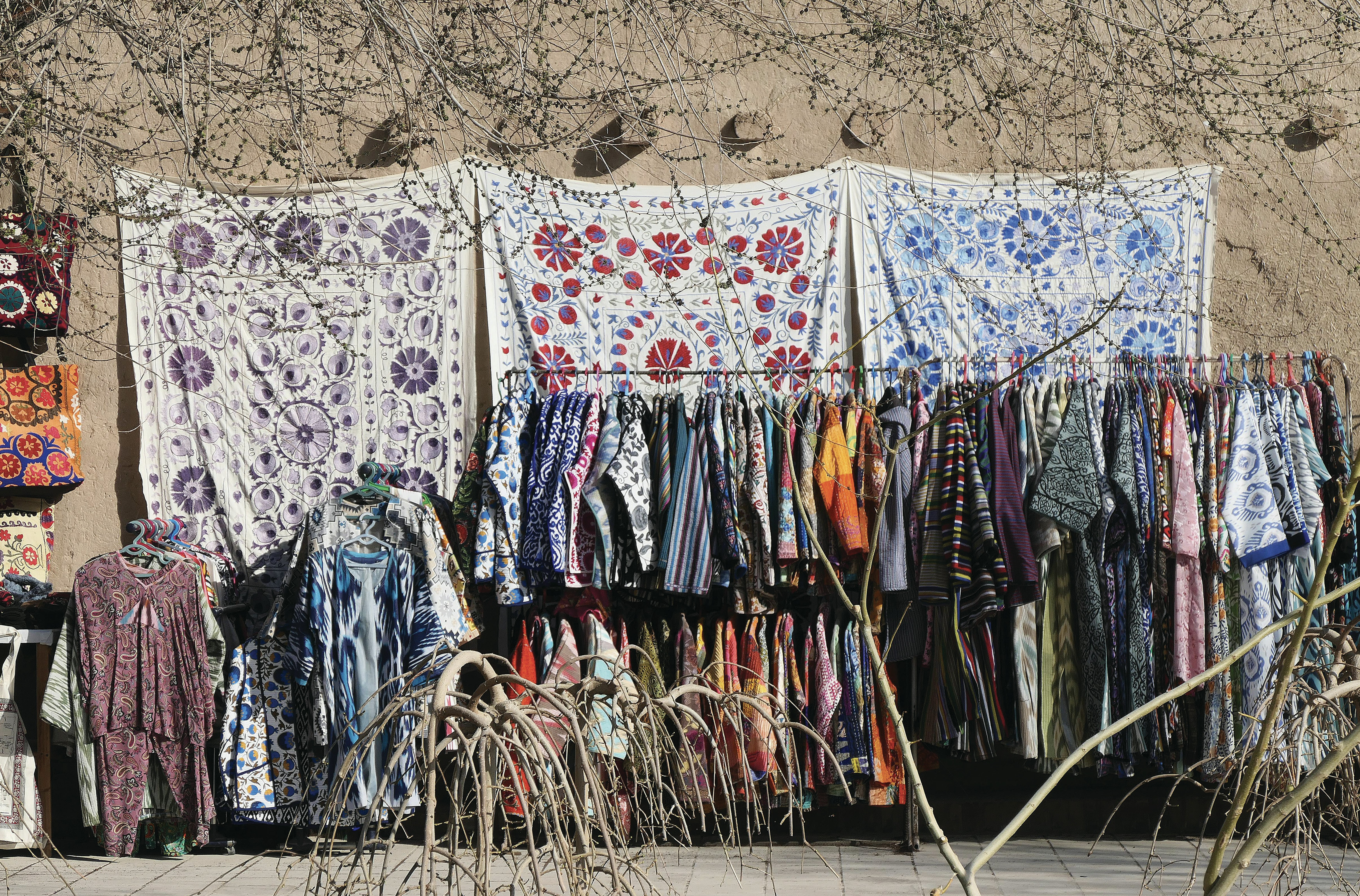
Essential Criteria for Selecting a Horse Riding Pants Manufacturer
Choosing the right manufacturer is arguably the most critical decision in the production process. A great partner does more than just sew fabric together; they act as an extension of your brand, upholding your standards for quality, ethics, and innovation. For specialized apparel like horse riding pants, this selection process must be meticulous, focusing on a manufacturer's technical expertise, communication practices, and commitment to quality assurance.
Prioritizing Quality Control with a Horse Riding Pants Manufacturer
Quality assurance (QA) is a proactive process that prevents defects before they happen, and it is the backbone of successful apparel manufacturing. It's a systematic approach to ensuring every garment meets predefined standards, from raw material sourcing to the final inspection. For a product where performance and safety are paramount, like equestrian breeches, a lapse in quality is not just a disappointment—it can be a hazard. Building trust with customers starts with delivering a consistently high-quality product, which makes robust QA non-negotiable.
Implementing Robust Quality Assurance Processes
An effective QA program covers every stage of production. It begins with clear, detailed documentation, such as a comprehensive tech pack that outlines all specifications—from fabric type and stitch count to measurements and grip placement. A reliable manufacturer will follow a multi-stage inspection protocol:
- Pre-Production Inspection: Verifying that all raw materials (fabric, thread, zippers, buttons) meet the specified quality standards before cutting begins.
- In-Process Inspection: Conducting checks at critical stages of the sewing line to catch errors early. This prevents the replication of a mistake across an entire batch, saving time and resources.
- Final Inspection: A thorough assessment of finished garments to check for defects in stitching, sizing, color, and overall construction before they are packed for shipping.
Manufacturers committed to quality will often use an Accepted Quality Limit (AQL) system for these final checks, providing a statistical method for determining the acceptability of a production lot. Implementing such a rigorous framework ensures that the final product consistently aligns with your brand's vision and customer expectations.
Certifications to Look for: ISO, OEKO-TEX, WRAP
Third-party certifications are a reliable indicator of a manufacturer's commitment to quality, safety, and ethical practices. When vetting potential partners, look for the following:
- ISO 9001: This is the international standard for a Quality Management System (QMS). A manufacturer with ISO 9001 certification has proven their ability to consistently provide products that meet customer and regulatory requirements. It demonstrates a systematic approach to management and a commitment to continuous improvement, which can significantly reduce defects and enhance product quality.
- OEKO-TEX® STANDARD 100: This label certifies that every component of a textile product—from the thread to the buttons—has been tested for harmful substances and is harmless to human health. Given the close skin contact of riding pants, this certification provides crucial assurance of product safety for the consumer. It goes beyond legal requirements, testing for a wide range of regulated and non-regulated substances.
- WRAP (Worldwide Responsible Accredited Production): WRAP is the world's largest independent certification program focused on ensuring ethical and humane manufacturing processes in the apparel industry. A WRAP-certified factory complies with 12 principles covering areas like workplace regulations, prohibition of forced and child labor, health and safety, and environmental practices. Partnering with a WRAP-certified facility protects your brand's reputation and ensures your products are not linked to human rights violations or unsafe working conditions.
| Certification | Primary Focus | Benefit for AOLAFREE |
|---|---|---|
| ISO 9001 | Quality Management Systems | Ensures consistent product quality and process efficiency. |
| OEKO-TEX® STANDARD 100 | Product Safety (Harmful Substances) | Guarantees riding pants are safe for skin contact. |
| WRAP | Ethical & Responsible Manufacturing | Upholds brand values and ensures humane production conditions. |
The Importance of Effective Communication with Your Horse Riding Pants Manufacturer
Clear, consistent, and transparent communication is the foundation of a successful manufacturing partnership, especially when working across continents. Misunderstandings due to language or cultural differences can lead to production errors, delays, and financial losses. Establishing effective communication protocols from the outset is essential for a smooth workflow and a strong, long-term relationship.
Overcoming Language and Time Zone Differences
While many manufacturers in China have English-speaking staff, it's wise to adopt strategies that minimize the potential for misinterpretation. Using simple, direct English and avoiding slang or idioms is crucial. Best practices include:
- Using Visual Aids: Supplement written instructions with detailed images, diagrams, and annotated photos in your tech packs.
- Leveraging Technology: Use communication platforms like WeChat for quick questions, but confirm all critical details via email to maintain a clear record. Translation apps can also be helpful for bridging minor gaps, but should not be relied upon for complex technical discussions.
- Hiring Local Expertise: For complex negotiations or critical on-site visits, engaging a local sourcing agent or translator can be an invaluable investment.
- Establishing "Overlap Hours": Designate specific times for real-time communication to work around the 12-15 hour time difference between Western countries and China.
Establishing Clear Expectations and Feedback Loops
Ambiguity is the enemy of effective production. Every detail, from stitch type to shipping deadlines, must be clearly defined and documented. Create a master file or cloud-accessible document that both you and the manufacturer can reference, containing all specifications, feedback on samples, and approved changes.
A structured feedback loop is also vital. When reviewing samples, provide specific, actionable comments. Instead of saying "the fit is wrong," explain how it is wrong: "The waistband is 2cm too wide," or "The knee patch placement is 1cm too low." This clarity empowers the manufacturer to make precise corrections. Regularly scheduled check-ins and progress reports ensure that both parties are aligned throughout the production cycle, turning potential problems into opportunities for collaboration and refinement.
Customization and OEM/ODM Services from a Horse Riding Pants Manufacturer
For a brand like AOLAFREE, creating a unique product is key. This is where a manufacturer's customization capabilities, offered through OEM or ODM services, become critical. Understanding the difference is the first step:
- OEM (Original Equipment Manufacturer): You provide the complete design and tech pack, and the manufacturer produces it for you. This model offers full creative control.
- ODM (Original Design Manufacturer): The manufacturer offers pre-designed products that you can rebrand and make minor modifications to. This is a faster, more cost-effective option for brands looking to launch quickly.
For developing a signature line of horse riding pants, an OEM partnership is ideal as it allows for complete control over every aspect of the design.
Tailoring Designs for Personalized Fit and Features
Customization begins with a deep understanding of the target rider. Are you designing for competitive dressage riders, jumpers, or leisure trail riders? Each discipline has unique needs. A specialized equestrian apparel manufacturer will understand the ergonomics of riding and can help tailor silhouettes for different body types and activities. The design process involves detailed steps, from initial sketches and creating a tech pack to pattern drafting and sample development, often requiring multiple iterations to perfect the fit. The goal is to create pants that feel like a second skin, with features like a high-waisted cut for support or strategically placed pockets that don't interfere with the saddle.
Incorporating Specialized Grips and Reinforcements
The grip is one of the most important technical features of modern riding pants, significantly enhancing stability and connection in the saddle. Manufacturers can offer various grip options, typically applied as silicone patterns:
- Knee Patch Grip: Provides targeted grip for jumping and riders who require more freedom of movement in the seat.
- Full Seat Grip: Offers maximum stability, extending from the seat down the inner thigh. This style is preferred by dressage riders and beginners who need extra security.
The silicone itself can be applied in various patterns (dots, stripes, custom logos), and the size and placement of these elements affect both the level of grip and the fabric's breathability and stretch. A knowledgeable manufacturer can advise on the best silicone application technique—such as screen printing or melting—to ensure durability and performance. Beyond grips, incorporating reinforced stitching and durable fabrics in high-wear areas like the inner knees and seat is essential for the longevity of the garment.
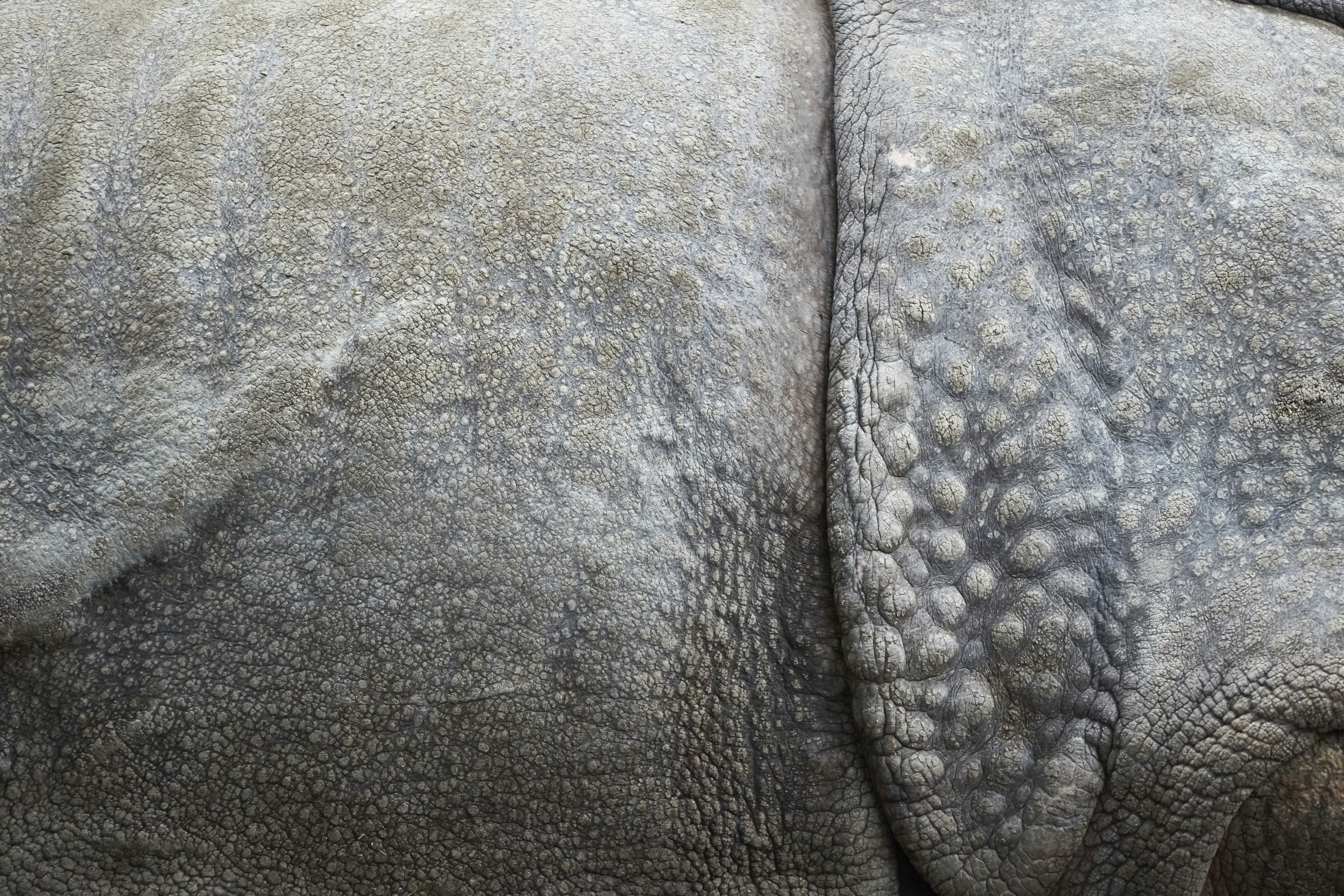
Sustainable Practices for a Responsible Horse Riding Pants Manufacturer
In today's market, sustainability is no longer a niche preference but a core brand value that resonates deeply with consumers. For Aolafree, partnering with a horse riding pants manufacturer that demonstrates a genuine commitment to environmental stewardship and ethical production is essential. As consumer awareness grows, brands that prioritize transparency and sustainability can build stronger trust and loyalty. This involves a holistic approach, from sourcing eco-friendly materials to ensuring the entire manufacturing process minimizes its environmental footprint and upholds social responsibility.
Sourcing Eco-Friendly Materials for Horse Riding Pants
The foundation of a sustainable product is its materials. The textile industry has made significant strides in developing innovative, eco-friendly fabrics that offer the high performance required for equestrian apparel without the heavy environmental toll of conventional materials. Many Chinese suppliers now focus on certified sustainable fabrics to meet global demand. Asking a potential manufacturing partner about their sourcing capabilities for these materials is a critical step in the vetting process.
Recycled Polyester and Organic Cotton
- Recycled Polyester (rPET): This material is created by recycling post-consumer plastic waste, such as PET bottles. The process of creating rPET reduces reliance on virgin petroleum, cuts CO₂ emissions, and diverts plastic from landfills and oceans. Recycled polyester is durable and performs well in sportswear, making it an excellent choice for hard-wearing riding pants. Several equestrian brands are already incorporating fabrics made from recycled plastic bottles into their clothing lines.
- Organic Cotton: Grown without synthetic pesticides or fertilizers, organic cotton promotes healthier soil, uses significantly less water than conventional cotton (up to 91% less), and reduces greenhouse gas emissions. Its natural breathability and soft feel make it an ideal component for comfortable riding apparel, especially when blended with stretch fibers for flexibility.
Innovative Fabrics: Bamboo Fiber and Eucalyptus-based Materials
- Bamboo Fiber: As a fast-growing plant that requires minimal water and no pesticides, bamboo is a highly sustainable raw material. The resulting fabric is exceptionally soft, breathable, moisture-wicking, and naturally antibacterial, which helps resist odors. These properties make bamboo-based textiles a superb option for high-performance activewear, keeping riders comfortable and fresh.
- Eucalyptus-based Materials (TENCEL™ Lyocell): TENCEL™ is a brand of lyocell fiber derived from the wood pulp of sustainably managed eucalyptus trees. The production process is famously eco-friendly, using a closed-loop system that recycles over 99% of the water and non-toxic solvent used. The fabric is renowned for its silky softness, excellent breathability, and superior moisture absorption, making it gentle on sensitive skin and ideal for performance apparel.
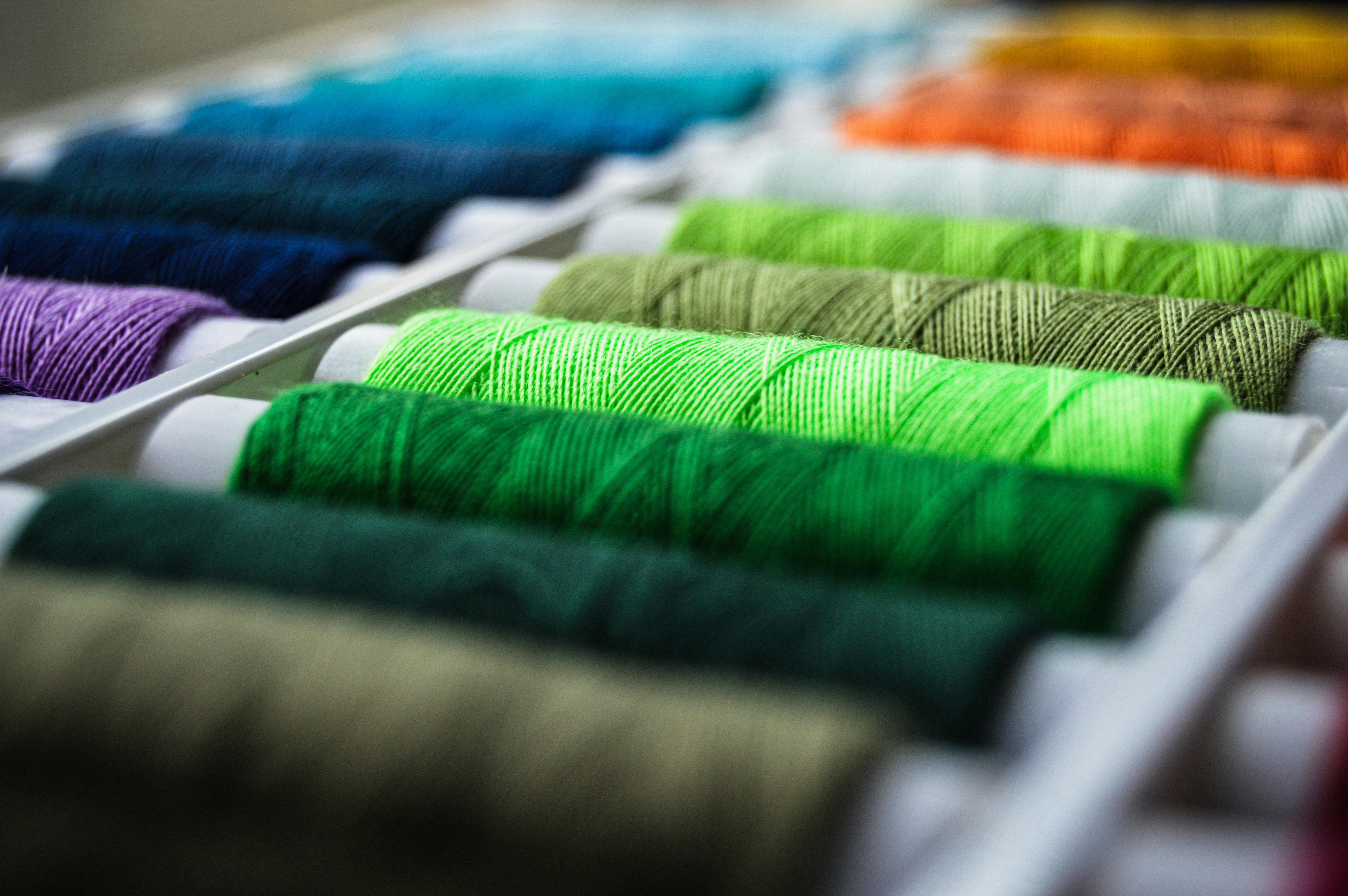
Ethical Manufacturing and Environmental Footprint of a Horse Riding Pants Manufacturer
A truly sustainable manufacturer looks beyond just materials and considers the entire production lifecycle. This includes their impact on the environment through water and energy consumption, as well as their social responsibility towards their workers. China has been actively promoting green manufacturing and a circular economy, with government plans and industry councils encouraging factories to adopt more sustainable practices.
Water Conservation and Energy Efficiency Initiatives
The traditional textile dyeing and finishing process is incredibly water-intensive, consuming vast quantities of water and energy, and is a major source of industrial water pollution. However, forward-thinking manufacturers are adopting innovative technologies to combat this:
- Water-Saving Dyeing: Techniques like foam dyeing, air dyeing, and supercritical CO2 dyeing drastically reduce or even eliminate the need for water in the dyeing process. For example, some foam-dyeing methods can cut water usage by up to 99%.
- Water Recycling: Implementing closed-loop water management systems allows factories to treat and reuse wastewater from dyeing and rinsing processes, significantly reducing their overall water intake.
- Energy Efficiency: Investing in renewable energy sources like solar panels and using modern, energy-efficient machinery helps lower a factory's carbon footprint.
Minimizing Waste: Zero Waste Programs and Recycling
Fabric waste is a significant issue in apparel production, with traditional methods often leaving 15-20% of the material on the cutting room floor. Sustainable manufacturers are tackling this through:
- Zero-Waste Pattern Cutting: This design technique meticulously plans the layout of pattern pieces to utilize every inch of the fabric, much like a jigsaw puzzle. While it requires creative and technical skill, it can almost entirely eliminate fabric waste at the design stage.
- Upcycling and Recycling: Progressive factories are finding ways to repurpose fabric remnants. For instance, some denim manufacturers upcycle scrap fabric into new material for recycled jeans. This aligns with the principles of a circular economy, where waste is viewed as a resource.
Beyond production waste, conducting social compliance audits is crucial to ensure ethical manufacturing. These audits, often based on standards like SA8000 or BSCI, verify that a factory provides fair wages, safe working conditions, and reasonable hours, and prohibits child or forced labor. Partnering with factories that are transparent and committed to worker welfare is fundamental to AOLAFREE's brand integrity. It is important to Contact Us for more information on our commitment to ethical sourcing.
Key Considerations for Partnership and Long-Term Success with a Horse Riding Pants Manufacturer
Forging a successful, long-term partnership with a horse riding pants manufacturer extends beyond initial production runs. It requires a deep evaluation of their core competencies, from their understanding of the unique demands of equestrian apparel to their ability to manage a complex global supply chain. A true partner grows with your brand, offering consistent quality, reliable delivery, and collaborative innovation. Establishing this synergy is essential for sustained success and building a resilient brand.
Evaluating Technical Capabilities and Equestrian Apparel Experience
Manufacturing standard fashion garments is vastly different from producing high-performance sportswear like horse riding pants. Good equestrian clothing must offer a precise balance of durability, flexibility, and safety. A potential manufacturing partner must demonstrate a profound understanding of these specific requirements. When vetting suppliers, prioritize those with explicit experience in the equestrian or broader technical sportswear market, as they will be more familiar with the necessary materials, construction techniques, and performance standards.
Understanding Movement-Specific Patterns and Durability Needs
Horse riding involves a unique and dynamic set of movements. The rider's clothing must accommodate sitting, squatting, and stretching without restricting motion or causing discomfort. This is where movement-specific pattern-making becomes crucial. A skilled pattern maker who understands equestrian ergonomics can draft patterns that provide a "second-skin" fit, eliminating chafing and bunching while allowing for a full range of motion. Garments should be tested to ensure they function well during typical riding motions. For pants, this means the rise shape, inseam, and thigh areas must be cut to facilitate forward leg movement and a deep seat without causing the back waist to gap.
Durability is another non-negotiable aspect. Riding pants are subjected to immense friction and stress, particularly in the seat, inner thighs, and knees. A manufacturer's technical capability should include knowledge of reinforced seams, high-stress area construction, and the use of abrasion-resistant fabrics that can withstand daily wear and tear.
Assessing Expertise in Specialized Equestrian Requirements
A manufacturer's expertise is revealed in the details. Do they understand the functional differences between a full-seat and a knee-patch breech? Can they advise on the best silicone grip patterns for stability versus flexibility? True specialists in equestrian apparel will have this knowledge. When evaluating a potential partner, inquire about their previous work with equestrian brands and request samples. Examining their past projects will provide tangible proof of their ability to handle specialized features like:
- Breathable, moisture-wicking fabrics suitable for various climates.
- UV-protective treatments to shield riders during long hours outdoors.
- Weather-resistant and thermal materials for all-season riding apparel.
- Secure and comfortable waistbands that stay in place during intense activity.
A factory tour, whether virtual or in-person, can also offer deep insights into their quality control stations, machinery, and overall production organization, confirming if their capabilities align with your brand's standards. Learn more about our manufacturing standards by checking out the page about us.
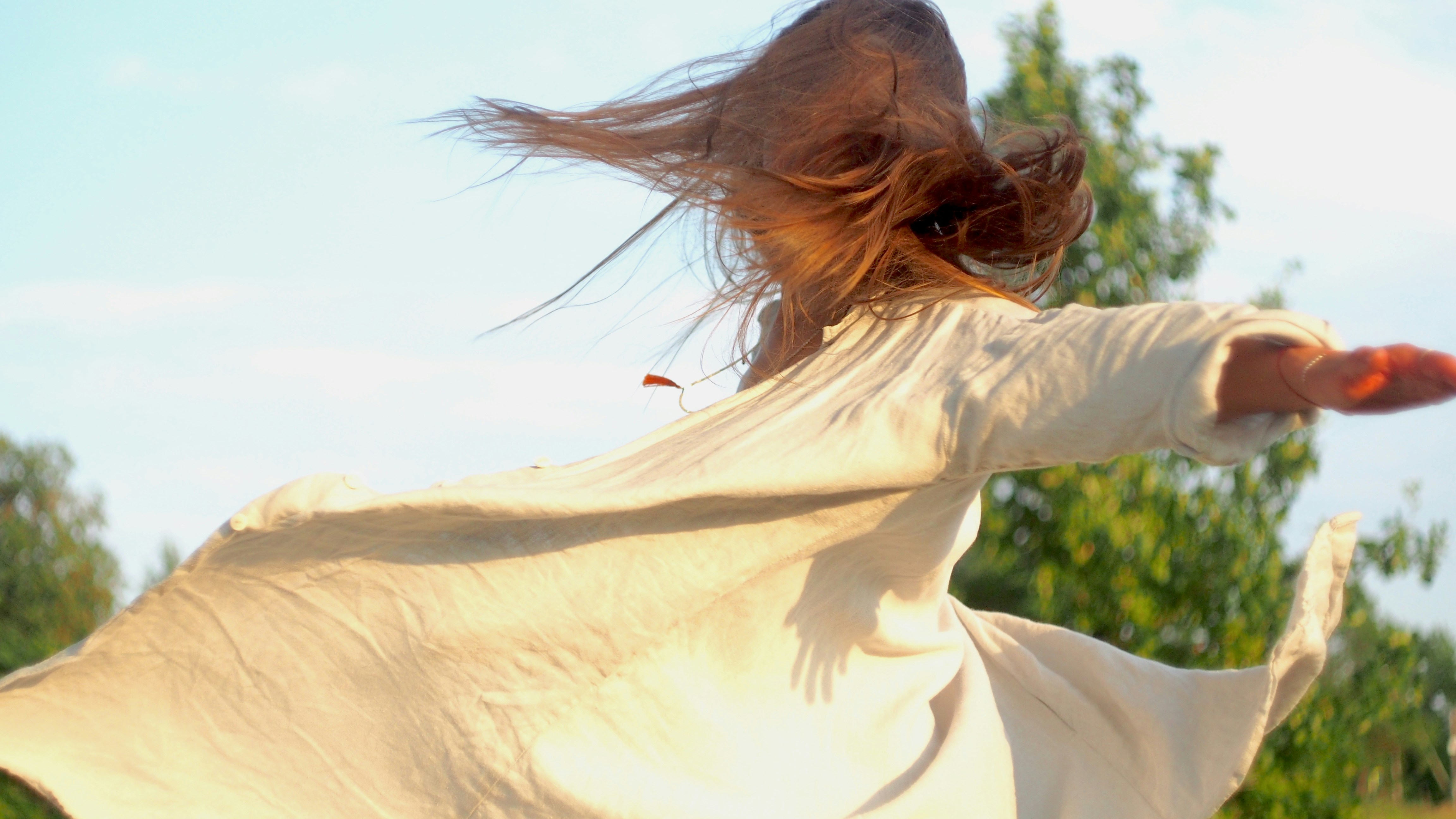
Logistics and Supply Chain Management with a Horse Riding Pants Manufacturer
An excellent product is only valuable if it can reach the market efficiently and reliably. A manufacturer's logistical prowess is as important as their production skill. A well-managed supply chain ensures that products are delivered on time and within budget, which is critical for inventory management, launch schedules, and overall business success. This is especially true when importing from China, where navigating shipping, customs, and documentation can be complex.
Streamlined Production and Lead Times
Lead time—the total duration from placing an order to receiving the final goods—is a critical metric in the fashion industry. Long lead times can mean missing trends and sales opportunities. An efficient manufacturer works to optimize every stage of the production process, from material sourcing to final delivery. Ask potential partners about their average lead times for sampling (typically 2-4 weeks) and bulk production (typically 4-8 weeks). Look for manufacturers who use production scheduling tools and provide real-time progress monitoring, as this transparency allows you to anticipate and mitigate potential delays. A streamlined workflow, clear communication, and efficient quality checks are all hallmarks of a manufacturer who can deliver on schedule.
Reliable Export Channels and Shipping
Navigating international shipping requires expertise in logistics and customs compliance. A seasoned manufacturer will have established relationships with reliable freight forwarders and a deep understanding of export procedures. Key considerations include:
- Understanding Incoterms: These internationally recognized terms (e.g., FOB, EXW, CIF) define the responsibilities of the buyer and seller for shipping, insurance, and customs. FOB (Free on Board) is one of the most common and recommended Incoterms when importing from China, as it gives the buyer control over the freight and associated costs once the goods are loaded onto the shipping vessel.
- Customs Documentation: The manufacturer should be proficient in preparing all necessary export documents, including the commercial invoice, packing list, and certificate of origin, to ensure a smooth customs clearance process.
- Shipping Options: A good partner can advise on the best shipping methods—such as sea freight for cost-effective bulk orders or air freight for urgent, smaller shipments—to balance cost and speed according to your needs.
By partnering with a manufacturer who has a robust and reliable logistics network, you can minimize the risk of shipping delays, hidden costs, and customs issues, ensuring your products arrive safely and on time. You can also Visit Us at upcoming trade shows to discuss these logistical details in person.
Key Takeaways
Finding the right horse riding pants manufacturer in China is a multi-faceted process that balances quality, cost, and ethical considerations. For a brand like AOLAFREE, success hinges on a partnership that aligns with our core values and can deliver a superior product. This guide has outlined the critical stages of this journey, from understanding the manufacturing landscape to ensuring long-term success.
The first step is recognizing why China is a premier location for apparel production. Its highly developed industrial clusters, particularly in provinces like Guangdong, Shanghai, and Jiangsu, offer unparalleled expertise, vertically integrated supply chains, and rapid production cycles. These hubs provide access to cutting-edge technical fabric capabilities, allowing for the creation of innovative equestrian wear with features like four-way stretch, moisture-wicking, and specialized grips. Understanding the regional specializations—be it Guangdong's focus on volume and speed or Shanghai's emphasis on premium quality—allows a brand to strategically select a location that best fits its needs.
Next, the selection process must be guided by a strict set of criteria. Quality control is paramount. A reliable manufacturer will have robust quality assurance systems in place, including multi-stage inspections from raw materials to finished goods. Look for internationally recognized certifications like ISO 9001 for quality management, OEKO-TEX® STANDARD 100 for product safety, and WRAP for ethical production. These certifications offer third-party validation of a factory's commitment to high standards. Effective communication is equally vital. Bridging language and time zone gaps through clear documentation, visual aids, and established feedback loops is essential to prevent costly errors and delays. Furthermore, a manufacturer's customization services, particularly OEM (Original Equipment Manufacturer), are crucial for creating unique, high-performance designs tailored to specific equestrian disciplines, incorporating features like personalized fits and specialized silicone grips.
In today's market, sustainability and ethical practices are non-negotiable. Partnering with a manufacturer who shares these values is essential for brand integrity. This means sourcing eco-friendly materials like recycled polyester, organic cotton, bamboo fiber, or TENCEL™ Lyocell. It also involves evaluating the manufacturer's environmental footprint, looking for initiatives in water conservation, energy efficiency, and waste reduction programs like zero-waste pattern cutting. Finally, confirming ethical labor practices through social compliance audits ensures that the people making the garments are treated fairly and work in safe conditions.
Finally, a successful partnership is built for the long term. This requires evaluating a manufacturer's technical capabilities beyond the basics, ensuring they understand the nuances of movement-specific patterns and the durability demands of equestrian activities. Their expertise should be evident in their ability to produce gear that enhances rider performance and safety. A seamless logistics and supply chain management system is the final piece of the puzzle. An experienced manufacturer will streamline production lead times and manage reliable export channels, navigating complex international shipping terms (Incoterms) and customs procedures to ensure timely and cost-effective delivery. By carefully considering each of these elements, AOLAFREE can forge a strong, transparent, and successful collaboration that elevates our product line and reinforces our commitment to the equestrian community.
Frequently Asked Questions (FAQ)
1. Why is China a preferred country for manufacturing horse riding pants?
China is a global leader in textile and apparel manufacturing due to its highly developed industrial ecosystem. It offers significant advantages, including cost-effectiveness driven by economies of scale, access to a vast array of advanced and technical fabrics, and decades of expertise in garment production. Key manufacturing regions like Guangdong, Shanghai, and Jiangsu have specialized industrial clusters that provide vertically integrated supply chains, shortening production lead times by up to 50%. These hubs offer everything from innovative fabric mills to experienced sewing factories and mature export channels, making China an efficient and reliable choice for producing high-quality equestrian apparel.
2. What are the most important quality certifications to look for in a manufacturer?
When selecting a manufacturer for horse riding pants, three key certifications provide crucial assurances:
- ISO 9001: This certifies that the factory has a robust Quality Management System (QMS), ensuring consistent production processes and a commitment to quality.
- OEKO-TEX® STANDARD 100: This guarantees that every component of the garment has been tested for harmful substances, making the final product safe for human skin—a critical factor for close-fitting apparel.
- WRAP (Worldwide Responsible Accredited Production): This is the gold standard for ethical manufacturing, verifying that the factory adheres to principles concerning fair labor, safe working conditions, and environmental responsibility. These certifications protect your brand's reputation and ensure product safety and integrity.
3. How can I ensure the riding pants are durable and suitable for athletic performance?
Ensuring durability and performance starts with a manufacturer that has specific experience in equestrian or technical sportswear. Evaluate their technical capabilities by checking their understanding of movement-specific patterns, which are designed to allow a full range of motion without restriction. The pants must be made from high-performance, durable materials and constructed with reinforced stitching in high-stress areas like the seat and inner knees. Modern technical fabrics that offer four-way stretch, abrasion resistance, and moisture-wicking properties are essential. Requesting samples and testing them for fit, comfort, and durability under riding conditions is a critical step in verifying a manufacturer's capability.
4. What is the difference between OEM and ODM, and which is better for a new line of riding pants?
- OEM (Original Equipment Manufacturer) is a model where you provide the complete design, specifications, and tech pack, and the factory manufactures the product for you. This gives you full creative control.
- ODM (Original Design Manufacturer) is where the factory offers a catalog of pre-designed products that you can select, make minor customizations to, and brand as your own. For a brand like AOLAFREE aiming to launch a unique and high-quality line of horse riding pants, OEM is the superior choice. It allows for complete customization of fit, materials, grip design, and other specialized features, ensuring the final product perfectly aligns with your brand's vision and performance standards.
5. How can we manage communication effectively with a manufacturer in a different time zone and language?
Effective cross-cultural communication is key. To overcome language barriers, use simple, clear, and direct English in all correspondence, avoiding slang or idioms. Supplement written instructions with detailed visuals, such as annotated images and diagrams in your tech packs. While platforms like WeChat are useful for quick updates, ensure all critical decisions and specifications are confirmed in email to maintain a clear, documented record. To manage time zone differences, schedule specific "overlap hours" for real-time meetings and be prompt with feedback to avoid production delays.
6. What sustainable materials should we consider for eco-friendly horse riding pants?
There is a growing range of high-performance, sustainable fabrics perfect for equestrian apparel. Key options include:
- Recycled Polyester (rPET): Made from post-consumer plastic bottles, this fabric is durable, performs well, and reduces plastic waste and reliance on virgin resources.
- Organic Cotton: Grown without harmful pesticides, it is soft, breathable, and uses significantly less water than conventional cotton.
- Bamboo Fiber: A fast-growing resource, bamboo textiles are incredibly soft, moisture-wicking, and naturally antibacterial.
- TENCEL™ Lyocell: Sourced from sustainably managed eucalyptus trees, this fabric is produced in a closed-loop system and is known for being exceptionally soft, breathable, and gentle on the skin. Discussing access to these certified materials is a critical part of vetting sustainable clothing manufacturers in China. For any more questions, feel free to Contact Us to learn more from our team.
Conclusion
Our venture to find the right horse riding pants manufacturer in China is a strategic and pivotal step towards enhancing the Aolafree product line. This journey is not merely about finding a supplier; it is about building a synergistic partnership grounded in shared values of excellence, innovation, and responsibility. By taking a methodical and informed approach, we can navigate the complexities of global sourcing and establish a collaboration that will yield high-quality, performance-driven equestrian apparel for our community.
By meticulously evaluating potential partners based on proven technical expertise, robust quality control systems, clear communication, and a demonstrable commitment to sustainability, we are confident in our ability to forge a successful and impactful alliance. A manufacturer that understands the specific ergonomic and durability requirements of equestrian sports, embraces eco-friendly materials and ethical production standards, and manages a streamlined supply chain is the ideal extension of our brand. This careful selection process ensures that every pair of riding pants we create will not only meet but exceed the expectations of discerning riders, reinforcing our dedication to the equestrian world. We know that by investing in the right partnership, we are investing in the future of our brand and the satisfaction of our customers.
